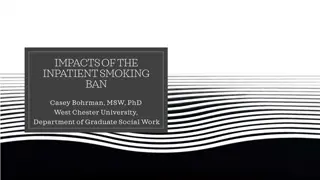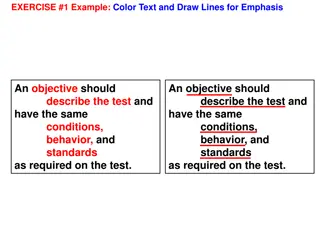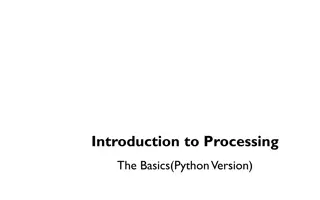
Creating a Parabolic Microphone for Sound Reflection Experiment
"Learn how to construct a parabolic microphone using household items to reflect sound waves and improve distant sound reception. Explore the basics of sound, variables, materials needed, and experimental procedures for an engaging project."
Download Presentation

Please find below an Image/Link to download the presentation.
The content on the website is provided AS IS for your information and personal use only. It may not be sold, licensed, or shared on other websites without obtaining consent from the author. If you encounter any issues during the download, it is possible that the publisher has removed the file from their server.
You are allowed to download the files provided on this website for personal or commercial use, subject to the condition that they are used lawfully. All files are the property of their respective owners.
The content on the website is provided AS IS for your information and personal use only. It may not be sold, licensed, or shared on other websites without obtaining consent from the author.
E N D
Presentation Transcript
Making a parabolic microphone : Casey Bradshaw | Teacher s name Mr. Kearney | School : Glenridge Elementary School |
Question : How can we make a parabolic microphone that can reflect sound waves? is how is the sound reflecting? Sounds far away are hard to hear. We need to make something than can reflect sound waves so that we are able to hear things far away.
Project Overview Summary of your project : I will use objects from my house to make a parabolic microphone that can reflect sound waves. Small dish Diameter: 12 inches Large box Diameter: 40 x 25 inches
Experimental procedure Step 1 Step 2 Step 3 Step 4 Adjust the variables for example, dish size, distance from microphone, and place. First make a parabolic mic. Measure the sound in decibels Use a keyboard that makes the audio over and over.
Prediction I think making a parabolic microphone should be easy because a big dish will reflect sound waves. I think parabolic microphone a will help me hear things far away.
Research: What is sound? Sound is a wave that you can hear because it moves through air and cannot move through space because there is no air. Sound moves through the air at 767 mph at 68 F at sea level. The speed of sound changes depending on height above sea level, the temperature and the material it travels through. The strength or loudness of sound is measured in decibels (dB). Quiet sounds are 0 to 49 dB, for example, talking in a quiet room is about 40 db. Normal sounds are 50 to 90 dB, for example, a vacuum cleaner noise is about 80 db. Extremely loud sounds are over 100 dB, for example, fireworks exploding at 1 meter is about 150 dB (that would damage your ears). Source: https://www.wikipedia.org
Variables Controlled variables Independent variable Dependent variable Keyboard because it makes the same sound every time I press it. Different sized dish or box to reflect sounds. The sound measured in dB.
Materials Materials Quantity (be specific) iPhone 1 iPhone holder 1 dish 1 lid 1 box 1 keyboard 1
Sound data Indoors 70 Signal to noise (background) ratio: P signal P background 60 Sound (dBA) Measured 50 40 = SNR 30 20 10 0 1 ft 8 ft 17 ft No dish Small dish Large box Background Background (noise inside house) Signal Outdoors 70 60 Sound (dBA) Measured The Signal to Noise Ratio 50 40 Inside house, no dish 61 dB / 36 dB = 1.69 SNR 30 20 10 0 Outside house, no dish 41 dB / 38 dB = 1.08 SNR 5 ft 10 ft 25 ft No dish Small dish Large box Background
Conclusions Indoors, using a parabolic microphone increased the sound I measured by about 5.5 db. Outdoors, using a parabolic microphone only increased the sound I measured by about 2.8 db. The parabolic microphone worked better indoors than outdoors. This is probably because there was about 10 dB more background noise outdoors. More background noise is bad because I could not measure the sounds clearly.






















